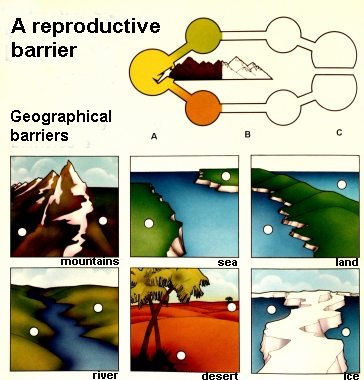
After: Het ontstaan van soorten (Natuur en Techniek,
1983)

After Whitfield: De evolutie van het leven
(1994)
1. there are so many and/or drastic changes that they do not recognize each other anymore. There is no interbreeding. New species have come into being.
2. there are certainly differences, but the populations are still interbreeding with fertile offspring. Two races of the same species have come into existence. In fact races are the preliminary stages of new species.
3. there are hardly any differences and everything stays as it was.
Examples of geographical barriers are a mountain range, a sea, land, a river, a desert and ice.
Speciation by geographical isolation is called allopatric speciation. Allo = another place, patria = homeland. The name comes from Mayr.
Know more?
Geographical
isolation
However, there have existed different Homo species. In any case in different times, but also simultaneously like the Neanderthal and Homo sapiens. And still more recently Homo floresiensis and modern man.